Discover Bodrum: 10 Must-See Spots in Turkey’s Coastal Paradise
Known as the pearl of the Aegean, Bodrum is a fascinating destination not only for its sea, sun and nightlife, but also for its rich history dating back thousands of years. These ancient lands, which first appeared on the historical stage around 3,500 years ago, represent a unique mosaic of different cultures and civilisations, including the Lelegians, Carians, Persians, Dorians, Hellenes, Romans, Byzantines and Ottomans. Bodrum, which carries the legacy of Halicarnassus, also known as the ‘Eternal Blue Paradise,’ is located at the intersection of Anatolian and Mediterranean civilisations. In this special geography, where every corner is intertwined with history, archaeological traces stretching from ancient times to the present day offer visitors a journey through time. So, what to do in Bodrum? And what to see in Bodrum?
Here are 10 unique places you must visit when you come to Bodrum, each carrying the traces of the past into the present:
1. Bodrum Zeki Müren Art Museum
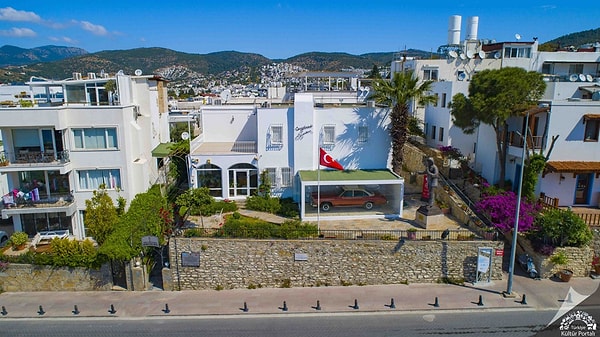
This special museum, which contains traces of the life of Zeki Müren, the legendary name of Turkish Art Music, is a very emotional and nostalgic place to visit for art lovers. The artist's house in Bodrum was turned into a museum by the Ministry of Culture and Tourism in 2000 after his death. The museum offers visitors the opportunity to get a close look at the artist's personal life and artistic career.
The museum displays Zeki Müren's stage costumes, awards, stage photographs, handwritten letters, paintings and personal belongings. In particular, the artist's unique drawings and paintings are sure to surprise visitors. Additionally, Zeki Müren's car and bronze statue are among the notable pieces on display at the museum. The museum holds great significance in terms of bearing witness to both an artist's life and the cultural memory of an era.
Source: Kültür Portalı
2. Bodrum Ancient Theatre
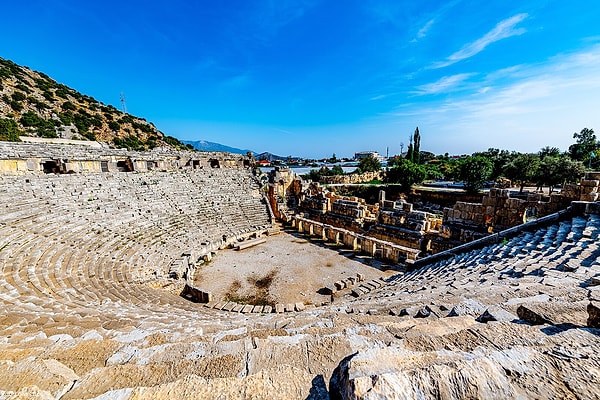
Located on the southern slope of Göktepe, the Bodrum Ancient Theatre stands out as one of the most magnificent structures in Halikarnassos. Dating back to the 4th century BC, this magnificent structure is one of the most notable open-air theatres not only of the ancient world but also of today, with a capacity of approximately 13,000 people.
The theatre consists of three main sections: the audience seating area (cavea), the orchestra section and the stage building (skene). This structural layout embodies all the elements of classical Greek theatre and showcases the architectural wisdom of the period. This venue, which echoed with the plays and festivals of antiquity, continues to thrive today, hosting cultural events and concerts during the summer months. As one of the oldest stone theatres in Anatolia, it is a unique destination for history and art lovers.
Source: Rab Lawrence
3. Iasos Ancient City
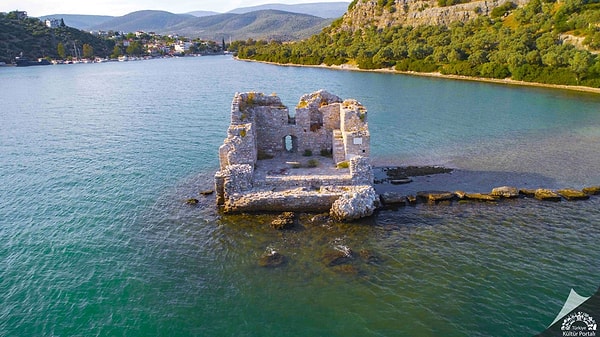
Located in Kıyıkışlacık Village, approximately 28 kilometres from Milas, overlooking the Aegean Sea, Iasos Ancient City offers visitors a magical atmosphere that opens the doors to the past. The city, which is said to have been founded by colonists from Argos, takes its name from Iasos, the leader of its founders. Although the first settlement is estimated to date back to the 5th century BC, excavations show that this date may go back much further, to 3000 BC.
Iasos, which was an island at the time of its founding, has naturally transformed into a peninsula over time. The ancient structures were built on this peninsula. Outside the city walls, there are aqueducts, tombs, and the Fish Market Museum, which is particularly associated with fishing. Due to the unsuitability of the land for agriculture, a lifestyle centred on seafood was adopted, and fishing became an economic and cultural value for the people of Iasos. Today, it is possible to discover the traces of this rich past through the ancient ruins and the artefacts exhibited in the museum.
Source: Kültür Portalı
4. Mausoleum Monument Museum
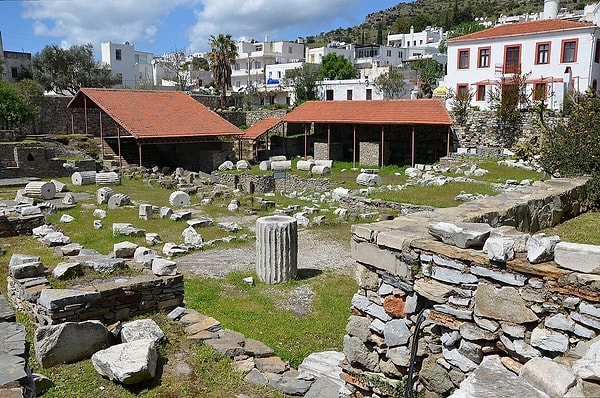
Recognised as one of the Seven Wonders of the Ancient World, the Mausoleum is a historical masterpiece located in the heart of Bodrum. Built in the 4th century BC in memory of Maussollos, the satrap (governor) of the Caria region, this massive tomb monument is a work of art that transcends its era, both in terms of its architectural structure and artistic details.
Reaching a height of 50 metres, this impressive structure was designed by the most talented architects and sculptors of the time and decorated with marble, green stone and bronze details. Completed by Maussollos' wife Artemisia after his death, the Mausoleum was not only a tomb but also a political structure symbolising the power of Caria. It is believed that Maussollos' ashes were buried here following the rituals of the period.
Today, the remaining parts of the monument have been preserved and protected from natural effects by building walls around it. The museum also displays sculptures and reliefs that reflect the artistic richness of the period.
Source: Holidaystobodrum
5. Bodrum Castle
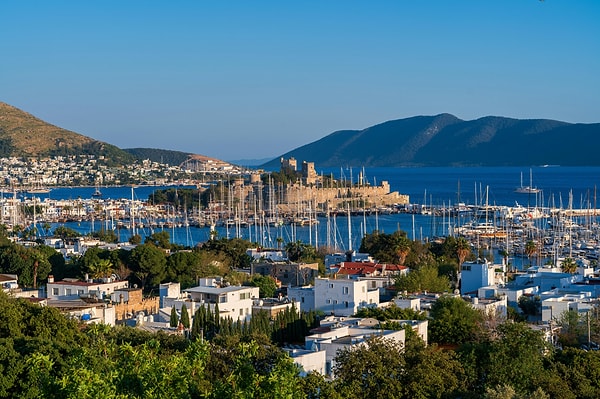
Bodrum Castle, which dominates the skyline of Bodrum, is one of the most iconic structures in the district in terms of history and architecture. Built by the Knights of Saint John between 1406 and 1522, the castle is located on a peninsula connecting two harbours, and stones from the Mausoleum were also used in its construction. The towers within the castle are named after different knightly nations such as Germany, Italy, France, England, and Spain, reflecting its role as an international defensive structure.
The castle, which was used for different purposes over time, served as a prison in 1895 and was damaged by bombing during World War I. However, it has regained its former glory thanks to recent restorations. The Underwater Archaeology Museum located in the castle is the first and only museum of its kind in Turkey. The museum displays sunken ships from the Eastern Roman period, coins and jewellery from ancient times, glass artefacts, amphorae and everyday objects. In addition, structures such as the Turkish Bath, Torture and Massacre Rooms reflect the various periods throughout history that the castle has witnessed.
6. Myndos Gate
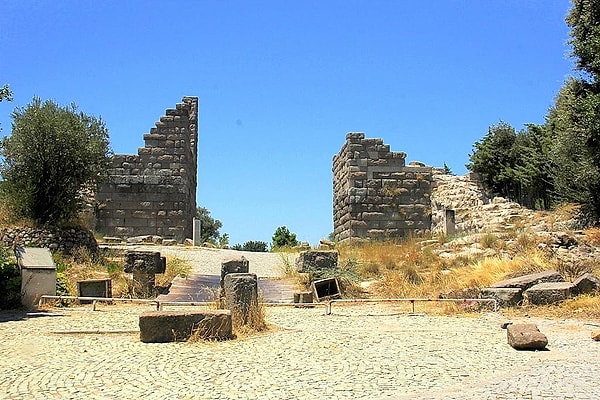
Myndos Gate, the main entrance to ancient Halicarnassus on the western side, is one of the oldest defensive structures in Bodrum. It is known as the gate that Alexander the Great tried to enter when he besieged Halicarnassus in 334 BC, and this event further enhances the historical importance of the gate.
The gate is part of the ancient city walls, and excavations in the surrounding area have uncovered traces from both the Hellenistic and Roman periods. Around the Myndos Gate are cemeteries, cisterns, and defence towers. Today, this area can be explored in an open-air museum atmosphere, offering visitors the opportunity to observe the ancient city's defensive architecture first-hand. The silhouette formed in front of the gate at sunset creates a visual feast for photography enthusiasts.
Source: Erol Şaşmaz
7. Pedasa Ancient City
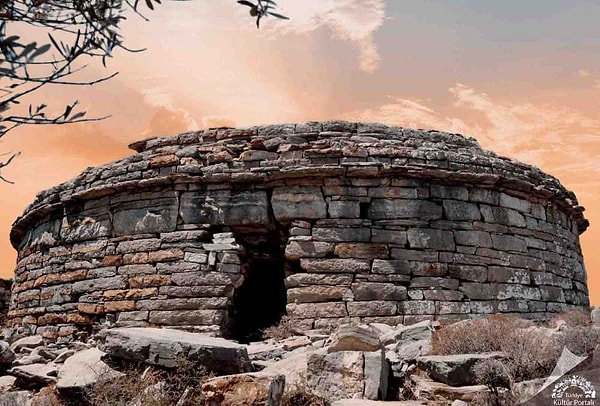
Located near the Konacık neighbourhood of Bodrum, Pedasa Ancient City is one of the rare settlements belonging to the Lelegians. It offers a real discovery area for history enthusiasts who want to follow the traces of this civilisation on the Bodrum peninsula. Pedasa has a history dating back approximately 3,500 years to the Bronze Age.
Built on wooded and hilly terrain, the city features ruins of walls, cisterns, temple foundations, and residential traces. The remains of the Athena Temple, in particular, provide insight into the city's religious life. The area is also a unique route for nature walkers, offering both an experience steeped in history and the opportunity to observe Bodrum's natural flora. Pedasa is the perfect escape for those seeking a quiet, secluded exploration away from the crowds.
Source: Kültür Portalı
8. Sandima Village (Abandoned Greek Village)
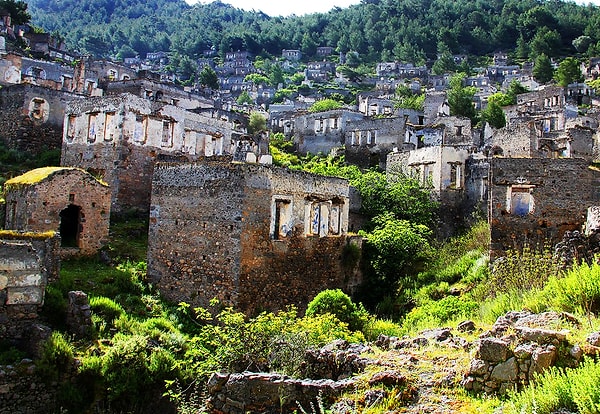
Located on the hillside of Yalıkavak, Sandima Village offers a mystical atmosphere with its stone houses that have stood the test of time and its quiet streets. This village, which was once a Greek settlement, was abandoned in the mid-20th century and has now become a living open-air museum.
The stonework and architecture of the village's houses reflect the aesthetic sensibilities of the era. Some of the buildings have been restored and are now used as art galleries, workshops or small cafés. Sandima Village is a quiet and impressive village, far from the tourist crowds of Bodrum, where you can peacefully follow the traces of the past. Walks at sunrise or sunset offer visitors unforgettable views.
Source: Nowbodrum
9. Gümüşlük Ancient City (Myndos) and Tavşan Island
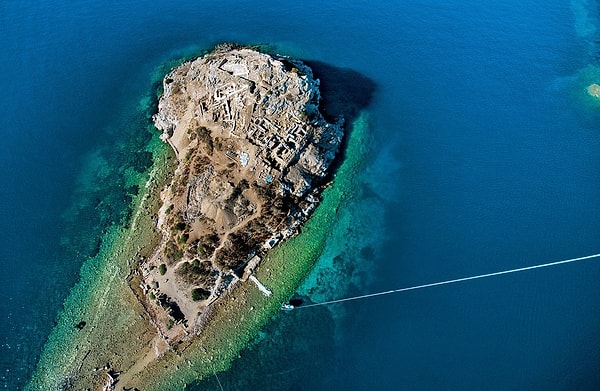
Located west of Bodrum, Gümüşlük is one of the rare places where historical and natural beauties intertwine. Known as Myndos in ancient times, the city eventually came to be called Gümüşlük. Together with Tavşan Island, which can be reached on foot from the shore, this place is like an open-air historical stage.
Remains of the ancient city can still be seen under the sea at Gümüşlük. The stone pavements of the ancient harbour are still visible in places beneath the water. This stone path leading to Tavşan Island offers both a mythological and romantic walking experience today. The view of Gümüşlük from the top of the island is a sight to behold in itself. In addition to its historical texture, the art galleries, workshops and musical events in Gümüşlük have transformed this area into a cultural attraction.
Source: Magmadergisi
10. Dibeklihan Culture and Arts Village
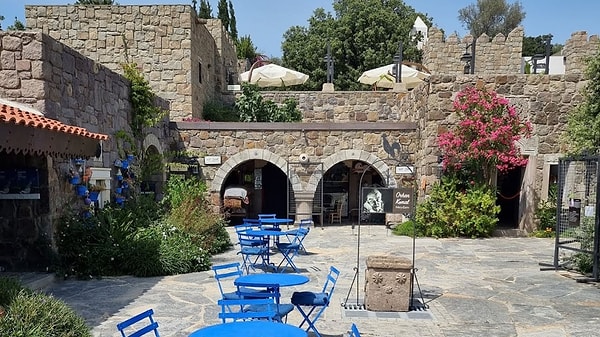
Located in the Yakaköy region of Bodrum, Dibeklihan is a unique arts village concept that brings together cultural events and handicrafts. This venue, which is like a platform where the past and the future meet, attracts attention with its courtyards built with stone architecture, art galleries, boutique shops, and cafes offering traditional flavours.
Throughout the year, Dibeklihan hosts exhibitions of paintings, sculptures, ceramics, and photographs. It also hosts talks, concerts, and literary events. Workshops selling handcrafted products offer visitors both shopping and cultural sharing opportunities. Dibeklihan is a unique venue that highlights Bodrum's commitment to art and traditional handicrafts, and it is a must-visit destination, especially for travellers interested in culture.
Source: Turnkeybodrum
Keşfet ile ziyaret ettiğin tüm kategorileri tek akışta gör!

Send Comment